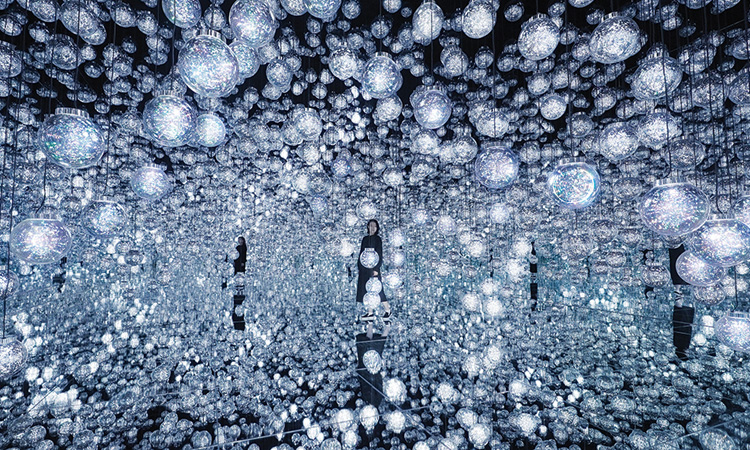The Rise of Immersive Art Installations: Bridging Perception and Reality
In recent years, immersive art installations that blend light, movement, and technology have captured the imaginations of art enthusiasts and casual visitors alike. These innovative spaces, such as teamLab’s “Bubble Universe: Spherical Crystallized Light, Wobbling Light and Environmental Light – One Stroke,” offer participants a unique opportunity to engage with art on a deeply personal level. Through the use of mesmerising aesthetics, these installations challenge viewers to reconsider the very essence of creativity, perception, and reality.
At the essence of teamLab’s latest creation lies the concept of “cognitive sculpture.” Visitors to this installation are enveloped in a whimsical array of luminous orbs that seem to shimmer and dance before their eyes. These orbs transcend physical boundaries; they exist purely as figments of light, shaped by the interplay between the surrounding environment and individual perceptions. The experience is enhanced by mathematical precision: the arrangement of these spheres allows viewers to draw continuous lines through each orb, creating a unicursal path. This seamless connection invites participants to explore their own conceptions of reality and illusion, ultimately questioning what is tangible and what is purely imagined.
A Palette of Interactive Experiences
The allure of interactive art installations is not confined to Japan. Across the globe, venues are embracing the immersive experience, transforming the way audiences interact with art. For instance, at the teamLab Borderless Digital Art Museum in Tokyo, visitors can meander through boundary-less artworks, inviting them to engage with art that transcends traditional spaces. The fluidity of the installations prompts individuals to recontextualize their understanding of artistic expression, making their way through a realm where art blurs the lines of physical demarcations.
Similarly, in Dubai, the Aya Universe beckons visitors into a realm of vibrant interactive environments filled with ever-changing LED displays and mirrors that create the illusion of infinite depth. As participants drift through the space, they encounter a sensory-rich environment that encourages playful exploration, creativity, and introspection. This fusion of technology and art cultivates an ambiance where the boundaries of reality and imagination become increasingly indistinct.
In the Republic of Korea, the Arte Museum Gangneung presents a staggering transformation of space and perception with its innovative cave-like installation. Visitors traverse an evolving environment that transitions from one fantastical space to another—dancing between a natural rock cave and a surreal world that challenges conventional notions of landscape and form. Such transformative experiences resonate with visitors, allowing them to delve into their imagination while pondering the intersection of nature and artistry.
Illuminating Perspectives on Reality
Art has long been a medium of reflection and an avenue for shared experiences. Immersive art installations delve deeper into this dialogue by inviting audience participation and prompting introspection. In Budapest, the Light Art Museum showcases a plethora of interactive installations that not only explore the aesthetic possibilities of light but also question the fine line between imagination and reality. By engaging with a spectrum of artistic expressions, visitors participate in a collective exploration of artistic boundaries, fostering an environment ripe for discourse.
Meanwhile, Artechouse in Washington, D.C. amplifies this experience with its rotating exhibitions that engage the senses through pulsating music and enveloping visuals. The combination of interactive elements fosters a dynamic atmosphere where participants are not mere observers but active contributors to the artistry. This shift in agency in the art-viewing experience creates a sense of ownership and individuals’ connection to the art itself, ensuring a deeper personal resonance.
Conclusion: A New Era of Artistic Engagement
The emergence of immersive art installations marks a significant evolution in the domain of contemporary art. By harnessing technology and interactivity, these installations invite viewers into a realm of shared experiences where perception, imagination, and reality coalesce. As art continues to evolve, these immersive environments challenge creators and audiences alike to engage with art in novel ways, fostering a community that appreciates the fluidity of artistic expression.
In an era where the lines between the physical and the digital blur, immersive art installations are laying the foundation for a future that celebrates creativity, innovation, and the limitless possibilities of human perception.
Tags: #ArtNews, #CultureNews, #Dubai, #UAE

